Abstract
The larvae and adults of five species of vector mosquitos in Fiji have been tested for susceptibility to chlorinated hydrocarbon insecticides by standard techniques. Four species of Aëdes, three of them endemic to the South Pacific, gave results not differing greatly from those found for members of the genus in other countries. Culex fatigans Weid was unusually susceptible as a larva but as an adult was normal.
A strain of A. pseudoscutellaris Theo. resistant to DDT as a larva was readily obtained by selective pressure, the LC50 being increased to some 2000 times that of a susceptible wild strain. There was no cross-resistance to BHC or dieldrin but adults of this strain showed a slightly increased tolerance to DDT. It is suggested that inheritance is monofactorial, that the gene is present at a low frequency in wild populations and is favoured by domestication or urban conditions. There are indications of physiological differences between resistant and susceptible individuals.
Full text
PDF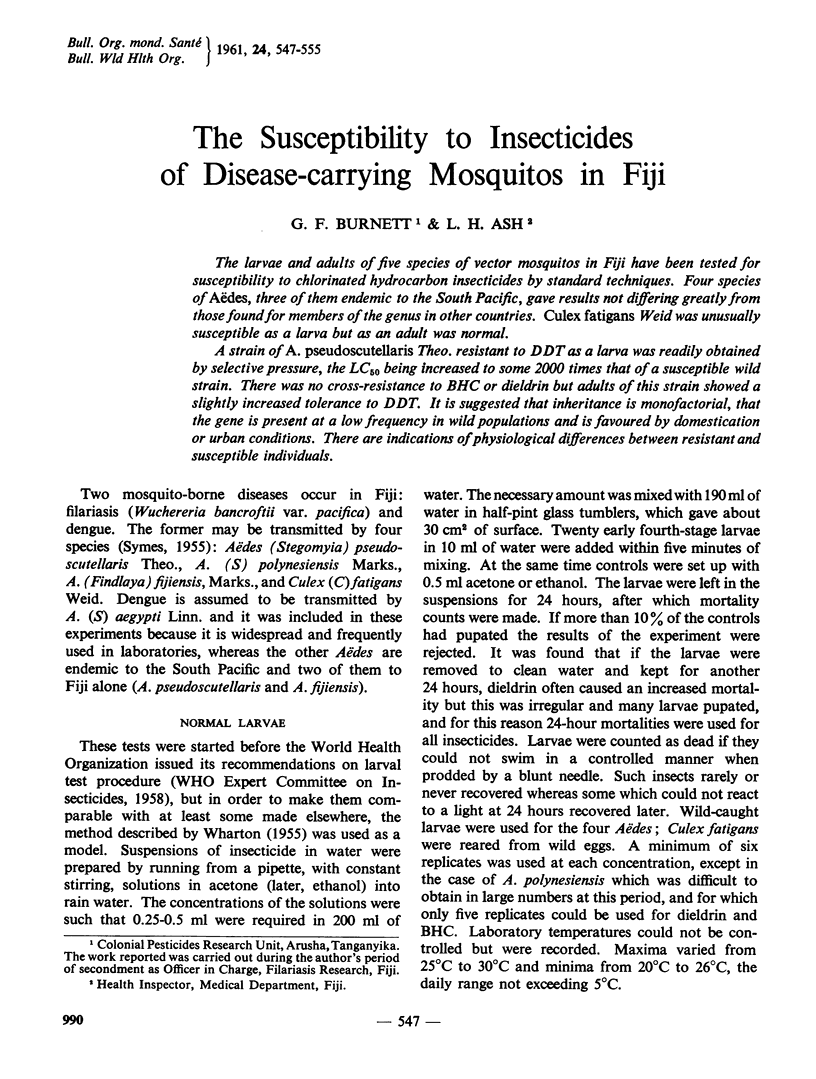

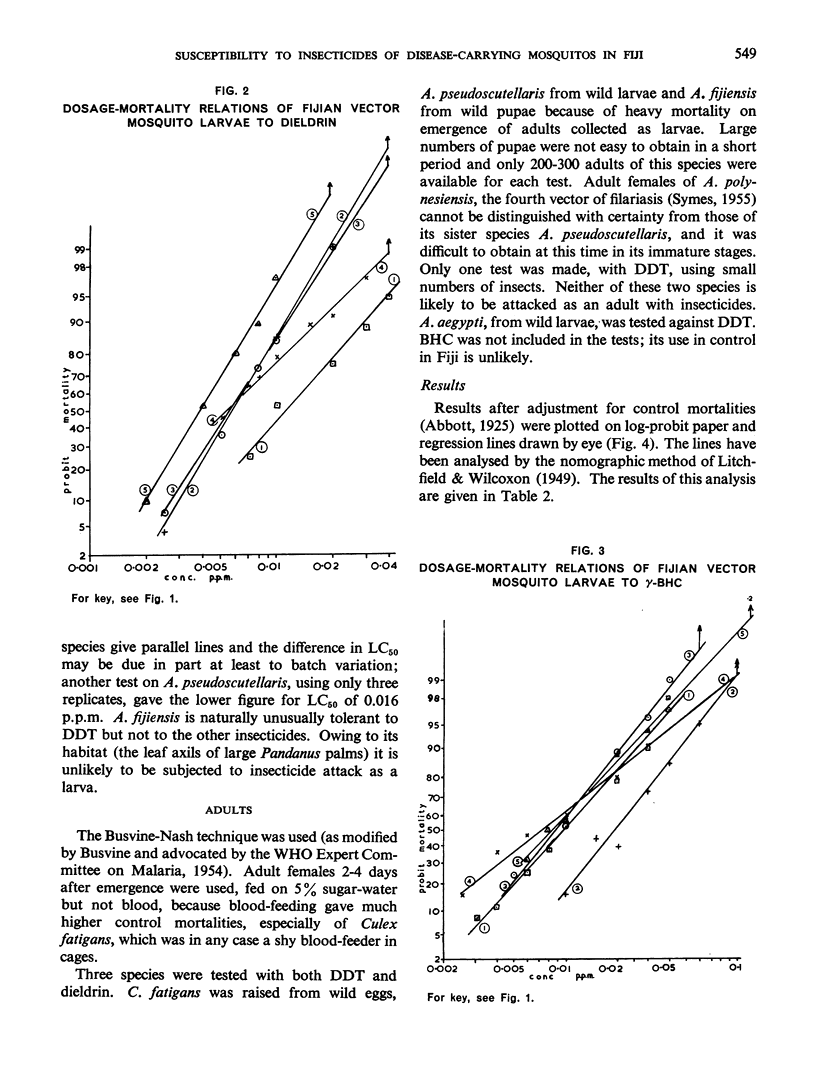



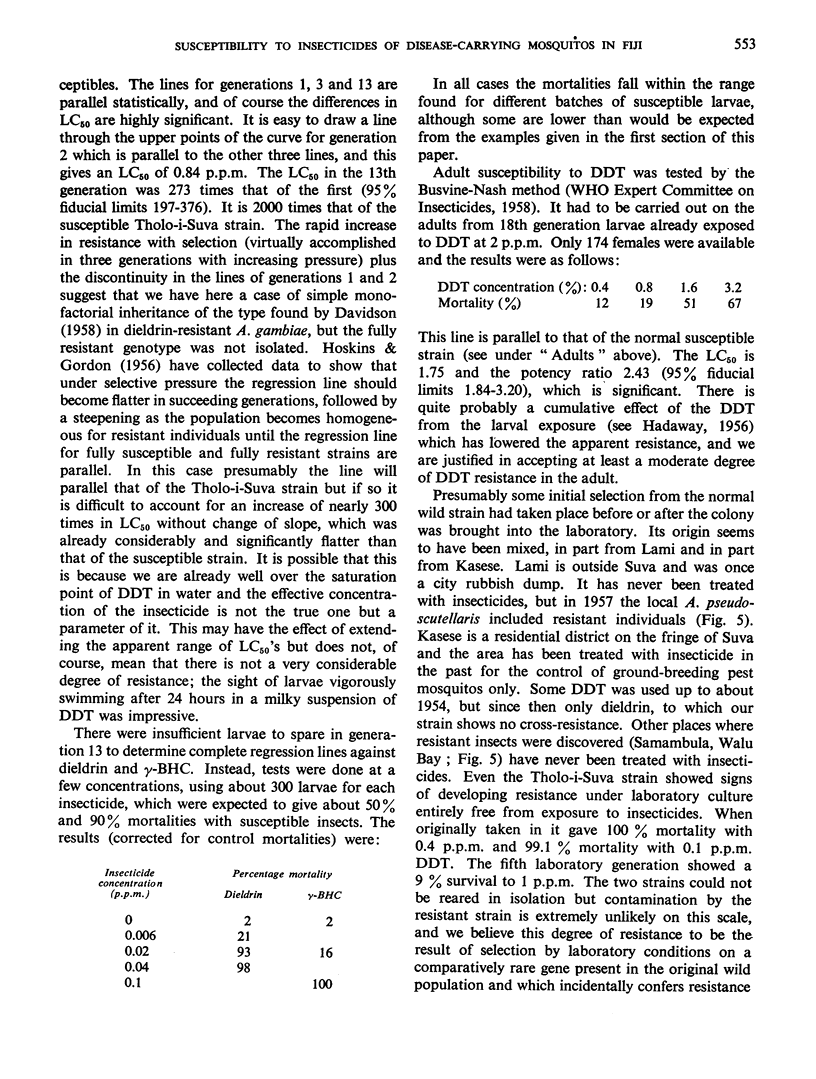
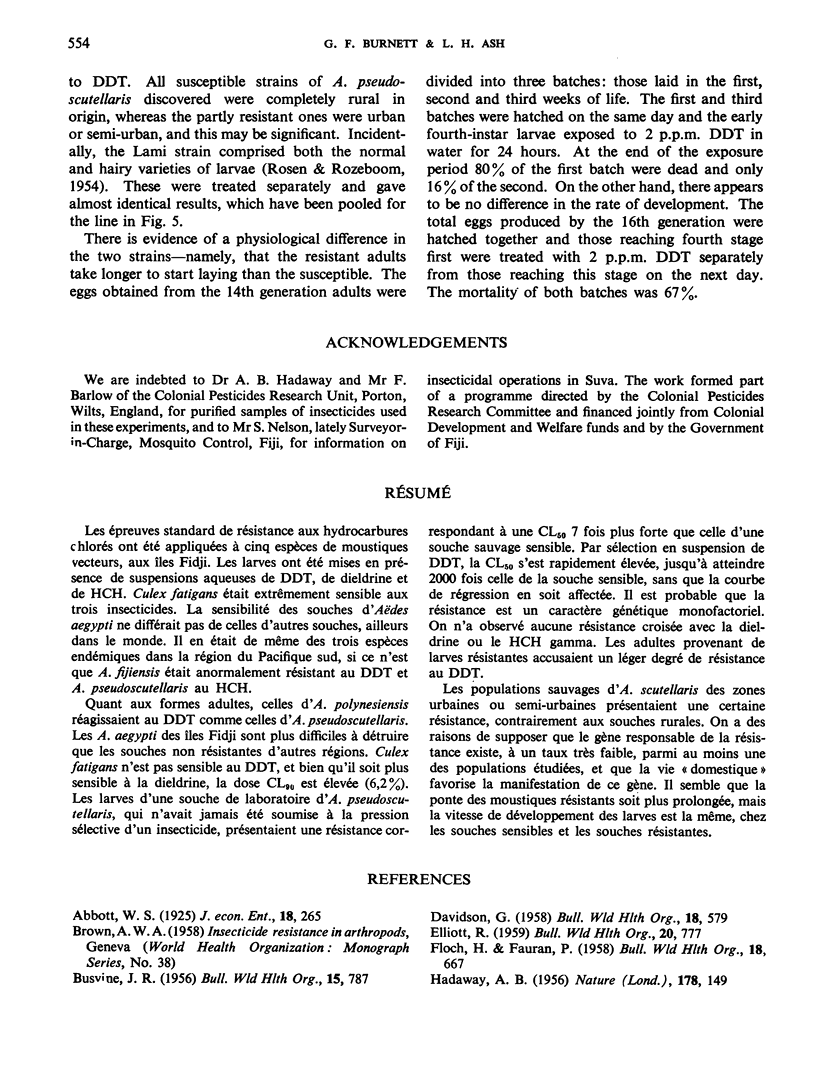
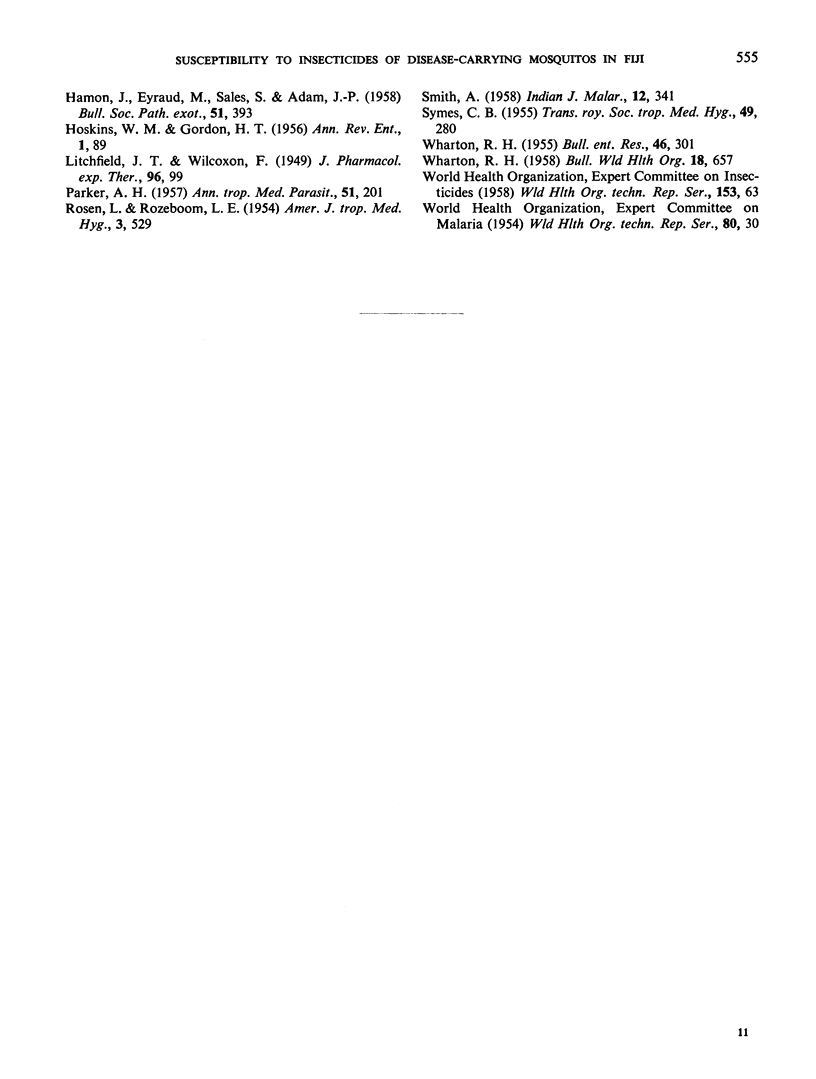
Selected References
These references are in PubMed. This may not be the complete list of references from this article.
- BUSVINE J. R. A survey of measurements of the susceptibility of different mosquitos to insecticides. Bull World Health Organ. 1956;15(3-5):787–791. [PMC free article] [PubMed] [Google Scholar]
- ELLIOTT R. Insecticide resistance in populations of Anopheles gambiae in West Africa. Bull World Health Organ. 1959;20:777–796. [PMC free article] [PubMed] [Google Scholar]
- FLOCH H., FAURAN P. Sensibilité aux insecticides chlorés des larves de Culex fatigans et d'Anopheles aquasalis en Guyane Française. Bull World Health Organ. 1958;18(4):667–673. [PMC free article] [PubMed] [Google Scholar]
- HADAWAY A. B. Cumulative effect of sublethal doses of insecticides on houseflies. Nature. 1956 Jul 21;178(4525):149–150. doi: 10.1038/178149a0. [DOI] [PubMed] [Google Scholar]
- HAMON J., EYRAUD M., SALES S., ADAM J. P. Observations sur le niveau de sensibilité au DDT, au dieldrin et au HCH de Culex pipiens ssp. fatigans dans la région de Bobo-Dioulasso, Haute-Volta, Afrique Occidentale Française. Report on the level of sensitivity to DDT, dieldrin & benzene hexachloride of Culex pipiens fatigans in the region of Bobo-Dioulasso, Haute-Volta, French West Africa. Bull Soc Pathol Exot Filiales. 1958 May-Jun;51(3):393–404. [PubMed] [Google Scholar]
- LITCHFIELD J. T., Jr, WILCOXON F. A simplified method of evaluating dose-effect experiments. J Pharmacol Exp Ther. 1949 Jun;96(2):99–113. [PubMed] [Google Scholar]
- PARKER A. H. The susceptibility of Aëdes aegypti larvae of different ages to DDT and dieldrin, and the relevance of the results to the formulation of standardized susceptibility tests for mosquito larvae. Ann Trop Med Parasitol. 1957 Jun;51(2):201–215. doi: 10.1080/00034983.1957.11685809. [DOI] [PubMed] [Google Scholar]
- ROSEN L., ROZEBOOM L. E. Morphologic variations of larvae of the scutellaris group of Aedes (Diptera, Culicidae) in Polynesia. Am J Trop Med Hyg. 1954 May;3(3):529–538. doi: 10.4269/ajtmh.1954.3.529. [DOI] [PubMed] [Google Scholar]
- SYMES C. B. Filarial infections in mosquitoes in Fiji. Trans R Soc Trop Med Hyg. 1955 May;49(3):280–284. doi: 10.1016/0035-9203(55)90071-7. [DOI] [PubMed] [Google Scholar]
- WHARTON R. H. Dieldrin resistance in Culex pipiens fatigans in Malaya. Bull World Health Organ. 1958;18(4):657–665. [PMC free article] [PubMed] [Google Scholar]


